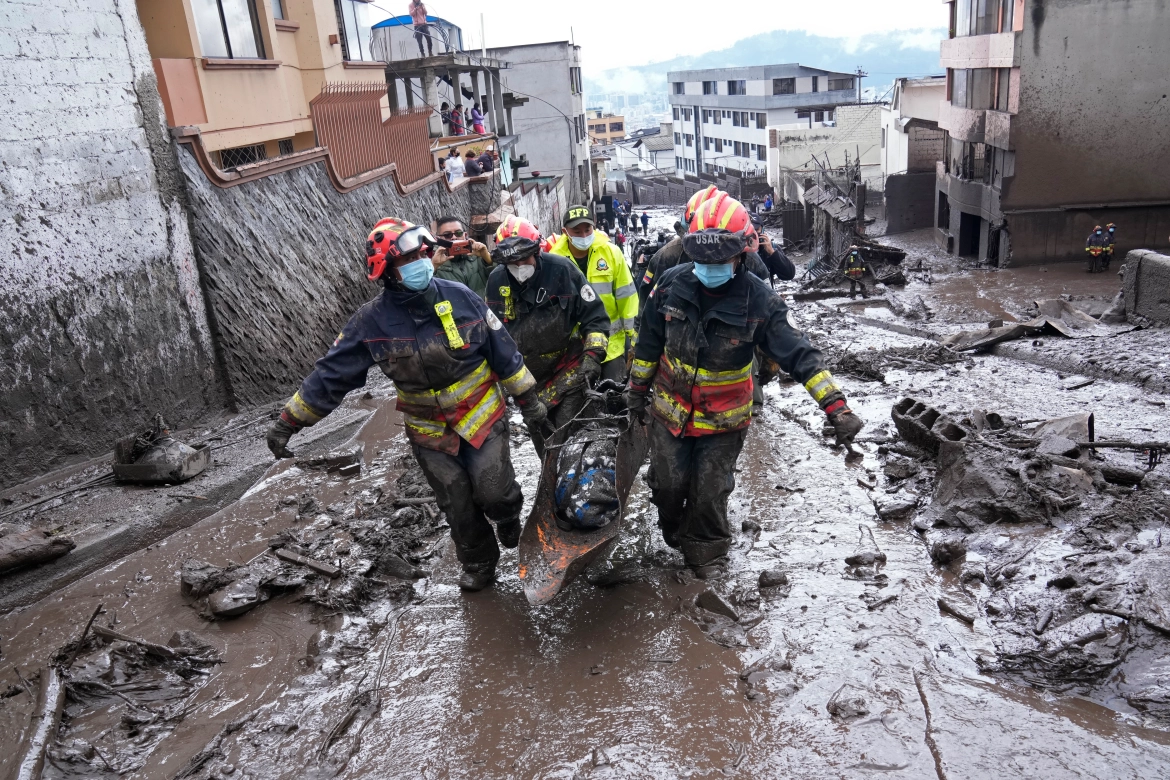Between 2017 and 2020 in Ecuador, the following occurred: 1,461 floods, 11,336 forest fires, 4,157 landslides and 113 volcanic activities.
Pujilí, La Maná, Pangua and Sigchos, in Cotopaxi, are on the list of the lastest cantons affected by natural disasters. In this case, floods. And as is already a tradition in the country, the sectors affected in the winter or by the rains repeat their tragedies cyclically.
Last month flooding disaster tragedies happened in Balao and Tenguel, in Guayas. One day after those were others in Montalvo, Quinsaloma and Quevedo, and Los Ríos. The list of possible floods, due to very high rainfall, for only the 24 hours between the morning of January 31st and February 1st, speculated disasters in 51 of the 221 cantons.
And despite having permanent phenomena, such as El Niño, since the 2008 Constitution, neither the governments of the day nor the legislators of the moment have approved a risk management law.
The current Executive has not shown interest in risk management, beyond attention to the victims once the disasters already happen. For example, President Guillermo Lasso decreed the issuance of a “contingency bond for people affected by events of natural or anthropogenic origin.”
This happened as a result of concurrent emergencies in December: Zaruma (El Oro), Nabón (Azuay), Guano (Chimborazo), Chimbo (Bolívar), due to subsidence and landslides; and in San Francisco (Orellana) and El Chaco (Napo), due to the erosion of the Quijos River.
This even implies an inefficient treatment of the assistance to the victims because there is no single record, and the aid (services or supplies) can be duplicated or wasted due to the lack of a clear assistance system.
That is why the Association of Risk Management Professionals has asked for its own sectoral law to be processed, separate from citizen security. The objective? To prepare early responders with the skills needed during emergency care and to work on prevention and mitigation plans.
The director of the National Risk Management Service (SNGR), Cristian Torres, has asked the Assembly to give priority to the treatment of the regulations.
Torres said that Ecuador is a territory exposed to different threats and, therefore, “urgently needs a law that allows managing risks, with a multilevel and multisectoral approach, prioritizing risk reduction and adaptation to climate change.”
He added that the 2021-2025 Development Plan reported that between 2017 and 2020, the following disasters occurred in Ecuador: 1,461 floods, 11,336 forest fires, 4,157 landslides and 113 volcanic activities.
Director Torres said that Assembly that it is necessary to “increase the level of efficiency in managing natural disasters and reducing potential risks.”
Lack of urgency in the Assembly
The four projects under analysis by the current Security Commission are tied to the Citizen Security Code, whose book on risk management has not yet been approved. And that regulation only indicates that the rectory will be exercised by the National Secretariat of Risk Management.
But it does not clarify competencies or hierarchies or processes. Article 11 dictates that prevention and measures to counteract, reduce and mitigate natural risks “correspond to public and private, national, regional and local entities.”
Three of the projects under treatment were raised in the previous parliamentary period. And the greatest progress was achieved with a 2012 project, which even had a report in a second plenary debate but was then forgotten.
Now the Security Commission is working on the three initiatives left over from the last Assembly, along with one presented by the Democratic Left in July.
Meanwhile, in the country there are on average 12 daily disasters of various kinds.


0 Comments